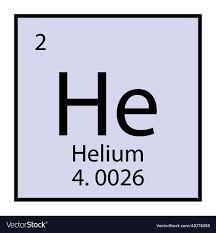Growing global demand on Helium ! Time to buy...

"Helium is a unique element with a variety of applications, and its demand across various industries has grown over the years. Here’s a look at some of the primary uses and areas where helium’s demand is high:
$Pulsar Helium Inc(PLSR.CA$ $Helium Evolution Inc(HEVI.CA$ $Global Helium Corp(HECO.CA$ $GLOBAL HELIUM CORP(HECOF.US$ $Avanti Helium Corp(AVN.CA$ $AVANTI HELIUM CORP(ARGYF.US$ $Desert Mountain Energy Corp(DME.CA$ $DESERT MOUNTAIN ENERGY CORP(DMEHF.US$ $Royal Helium Ltd(RHC.CA$ $ROYAL HELIUM LTD(RHCCF.US$ $Total Helium Ltd(TOH.CA$ $TOTAL HELIUM LTD(TTLHF.US$ $First Helium Inc(HELI.CA$ $FIRST HELIUM INC(FHELF.US$
-look the recent rise on Pulsar Helium !
Medical Industry
MRI Machines: Helium is used to cool the magnets in MRI scanners, making use of its unique low boiling point. About 2,500 MRI machines are built every year.
Scientific Research
Cryogenics: Helium’s low boiling point makes it ideal for cryogenic applications, including scientific experiments requiring extremely low temperatures. Liquid nitrogen is the primary choice when temperatures below 63 Kelvin (lower than -209.8 Celsius) are needed.
Space and Aerospace
Rocket Propulsion: Helium is used to pressurize fuel tanks in rockets.
Leak Detection: Helium’s small atomic size makes it suitable for detecting leaks in spacecraft.
Electronics Industry
Semiconductor Manufacturing: Helium is used as a cooling agent in semiconductor and electronics production.
Welding
Industrial Welding: Helium is employed as a shielding gas in arc welding processes.
Balloons and Entertainment
Inflating Balloons: Helium’s low density is utilized for inflating balloons for entertainment purposes.
Medical Industry
MRI Machines: Helium is used to cool the magnets in MRI scanners, making use of its unique low boiling point. About 2,500 MRI machines are built every year.
Scientific Research
Cryogenics: Helium’s low boiling point makes it ideal for cryogenic applications, including scientific experiments requiring extremely low temperatures. Liquid nitrogen is the primary choice when temperatures below 63 Kelvin (lower than -209.8 Celsius) are needed.
Space and Aerospace
Rocket Propulsion: Helium is used to pressurize fuel tanks in rockets.
Leak Detection: Helium’s small atomic size makes it suitable for detecting leaks in spacecraft.
Electronics Industry
Semiconductor Manufacturing: Helium is used as a cooling agent in semiconductor and electronics production.
Welding
Industrial Welding: Helium is employed as a shielding gas in arc welding processes.
Balloons and Entertainment
Inflating Balloons: Helium’s low density is utilized for inflating balloons for entertainment purposes.
Diving
Deep-sea Diving: Helium is mixed with oxygen to create breathing gas for deep-sea divers.
Optical Fiber Manufacturing
Fibre Production: Helium’s specific properties are used in the manufacturing of optical fibres.
Deep-sea Diving: Helium is mixed with oxygen to create breathing gas for deep-sea divers.
Optical Fiber Manufacturing
Fibre Production: Helium’s specific properties are used in the manufacturing of optical fibres.
Weather Monitoring
Meteorological Balloons: Helium-filled balloons are used in meteorological studies to measure atmospheric conditions.
Natural Gas Production
Purification of Natural Gas: Helium is extracted from natural gas fields and must be separated and purified during natural gas production.
Meteorological Balloons: Helium-filled balloons are used in meteorological studies to measure atmospheric conditions.
Natural Gas Production
Purification of Natural Gas: Helium is extracted from natural gas fields and must be separated and purified during natural gas production.
Industry Demand
Helium’s diverse applications have led to a significant increase in demand across various industries, especially in the medical, technological, and aerospace sectors.
Helium’s diverse applications have led to a significant increase in demand across various industries, especially in the medical, technological, and aerospace sectors.

However, helium is a non-renewable resource, and its extraction is tied to the production of natural gas. This has led to concerns about potential shortages in the future and has spurred efforts to find alternatives and improve recycling methods.
The strategic importance of helium, its unique properties, and increasing demand have made its market dynamics complex and often subject to fluctuations in price and availability. Investments in helium extraction and recycling technologies are seen as crucial to meeting the growing global demand and ensuring a stable supply."
Author: Christopher Liew, CFA
Disclaimer: Community is offered by Moomoo Technologies Inc. and is for educational purposes only.
Read more
Comment
Sign in to post a comment
